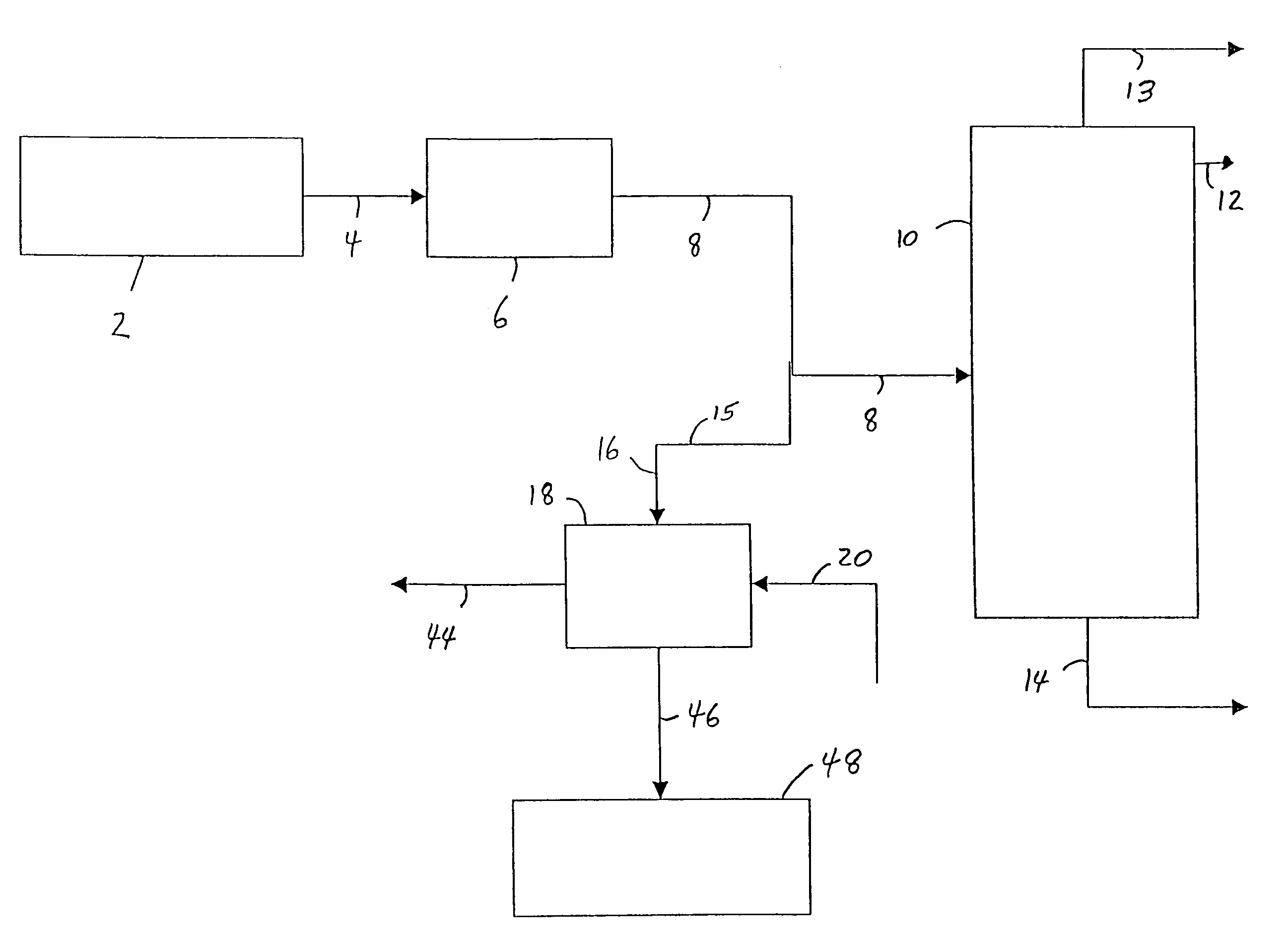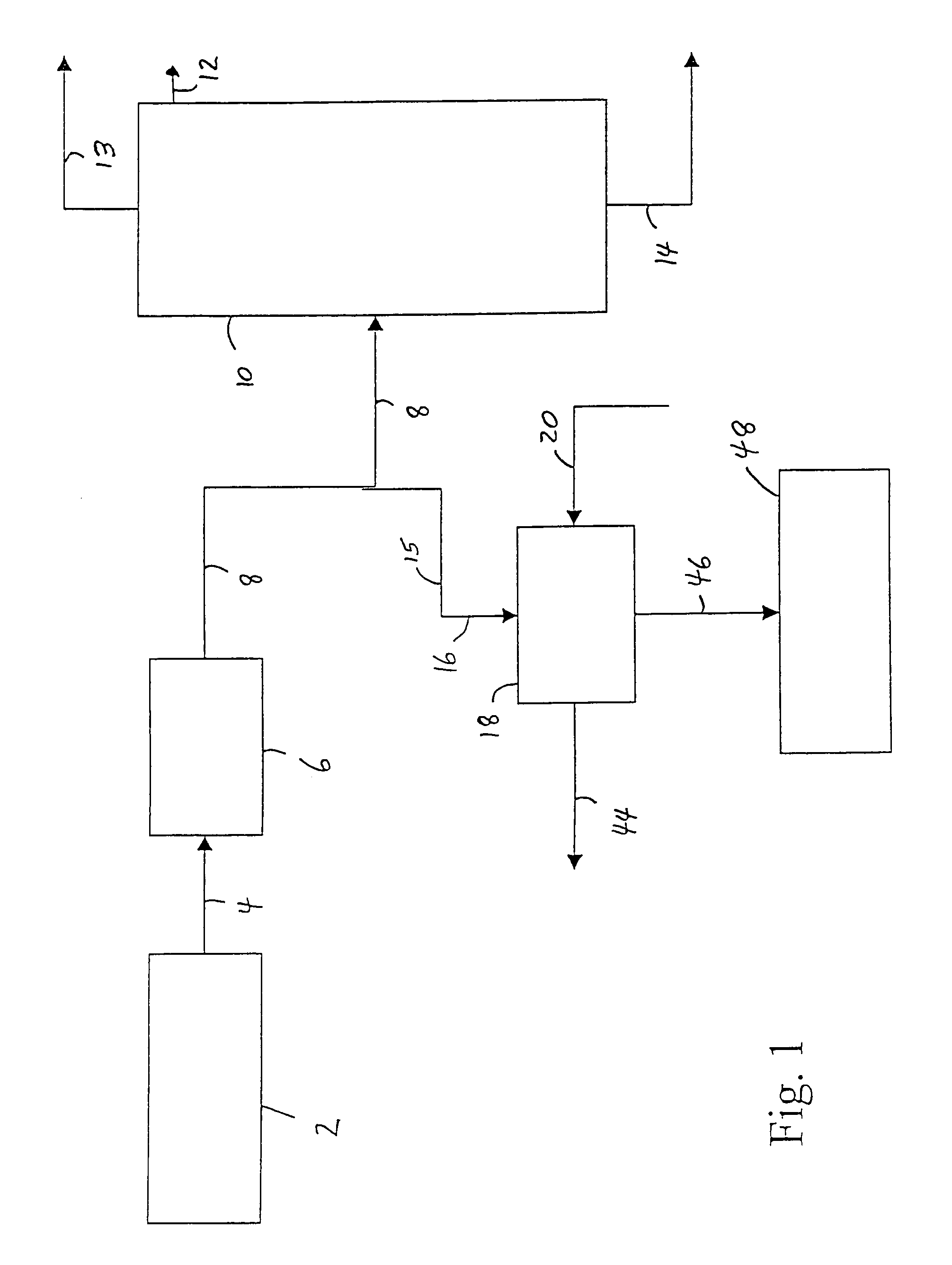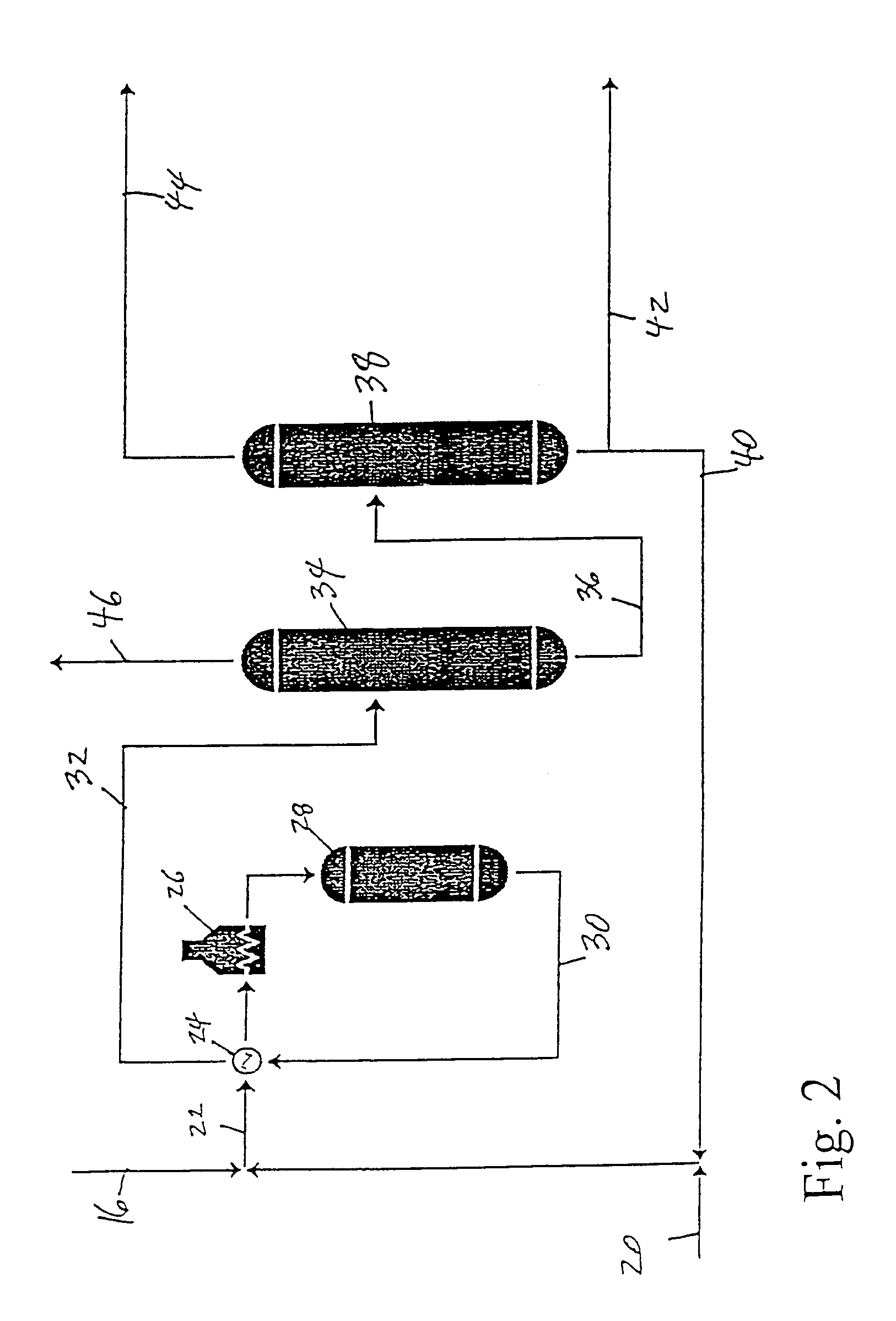Process for production of propylene and ethylbenzene from dilute ethylene streams
a technology of ethylene and benzene, which is applied in the field of production of ethylbenzene and propylene, can solve the problems of inefficient recycle step, inconvenient recycling of ethylene, and energy penalty for fixed-bed processes, and achieves significant energy and consequently cost, and eliminates the ethylene recycle step
- Summary
- Abstract
- Description
- Claims
- Application Information
AI Technical Summary
Benefits of technology
Problems solved by technology
Method used
Image
Examples
example 1
[0032]Referring to FIG. 1, an ethylene plant (up to and including the deethanizer step) 2, produces a vapor stream, comprising ethylene, ethane and acetylene, and may also comprise, e.g., unreacted hydrogen, methane and propylene, is sent via line 4 to an acetylene removal process 6 which is commonly a multiple-stage fixed-bed reactor system using precious metal catalyst. The resulting vapor stream is then sent via line 8 to an ethylene fractionation column 10, wherein the dilute ethylene stream is fractionated into high purity ethylene, which is taken off as overhead from the ethylene fractionation column 10 via line 12; a recycle ethane stream which is taken off as bottoms from the ethylene fractionation column 10 via line 14 (and may later be used to produce more ethylene); and a vent of, e.g., methane and hydrogen, which is taken off as overhead from the fractionation column 10 via line 13, according to known processes. In a preferred process of the invention, at least some of t...
examples 2-5
[0037]Examples 2, 3, 4 and 5 show embodiments of the invention which may be practiced in a manner which is very similar to the processes described in Example 1. However, the manner in which the ethylene stream in line 8 is treated before being fed to the propylene plant 18 varies with each example. Consequently, the composition of the feed sent to the propylene plant 18 and to the ethylbenzene plant 48 will also vary for each example.
example 2
[0038]Referring to FIG. 3, the ethylene stream from the ethylene plant 2 is sent, after the acetylene removal process 6, to a condenser 50 wherein the stream is partially condensed to provide liquid feed to the propylene plant 18, via line 52, and vapor feed to the ethylene fractionation column 10, via line 54. The stream in line 54 is vapor with an ethylene concentration of about 1 mol % to about 3 mol % higher than the stream fed to the condenser 50. The liquid stream in line 52 has an ethylene concentration which is about 1 mol % to about 3 mol % lower than the feed in line 8, and is sent to line 16 and on to the propylene plant 18. After reaction in the propylene plant, the remaining ethylene is taken from the deethylenizer 34 (FIG. 2) and sent via line 46 directly to the ethylbenzene plant 48, as in Example 1. Because the ethylene in the feed to the propylene plant is present in excess above that needed for propylene production (the ethylene quantity includes both propylene pro...
PUM
| Property | Measurement | Unit |
|---|---|---|
| mol % | aaaaa | aaaaa |
| mol % | aaaaa | aaaaa |
| mole ratio | aaaaa | aaaaa |
Abstract
Description
Claims
Application Information
 Login to View More
Login to View More - R&D
- Intellectual Property
- Life Sciences
- Materials
- Tech Scout
- Unparalleled Data Quality
- Higher Quality Content
- 60% Fewer Hallucinations
Browse by: Latest US Patents, China's latest patents, Technical Efficacy Thesaurus, Application Domain, Technology Topic, Popular Technical Reports.
© 2025 PatSnap. All rights reserved.Legal|Privacy policy|Modern Slavery Act Transparency Statement|Sitemap|About US| Contact US: help@patsnap.com



